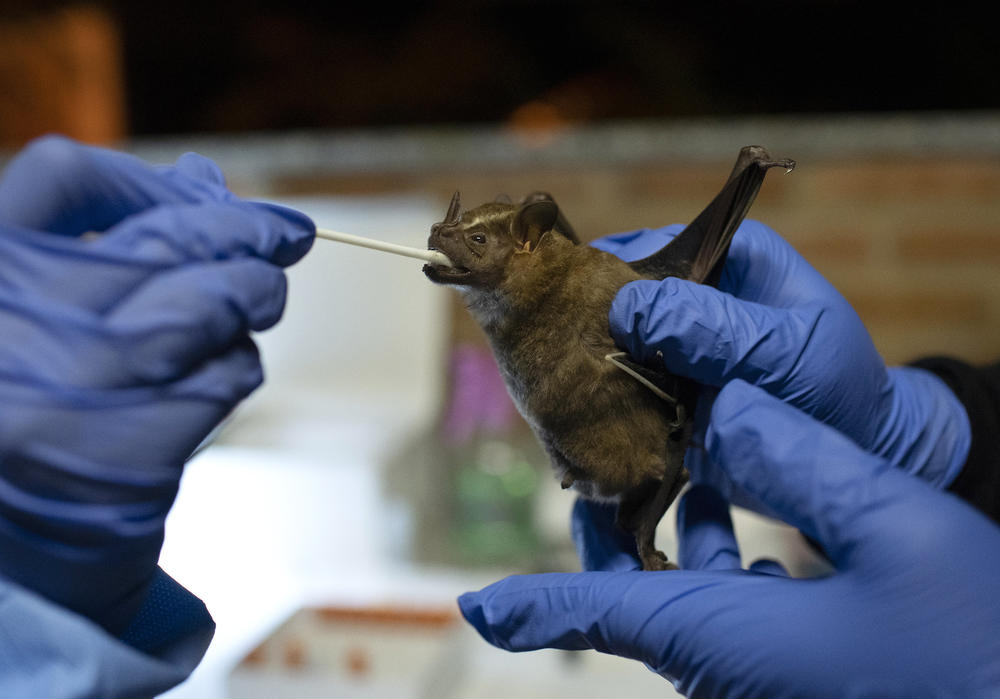
Caption
A researcher for Brazil's state-run Fiocruz Institute takes an oral swab sample from a bat captured in the Atlantic Forest, at Pedra Branca state park, near Rio de Janeiro, Tuesday, Nov. 17, 2020. Teams of researchers around the globe are racing to study the places and species from which the next pandemic may emerge. It's no coincidence that many scientists are focusing attention on the world's only flying mammals — bats.
Credit: (AP Photo/Silvia Izquierdo)

